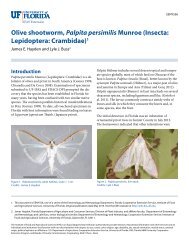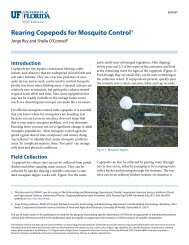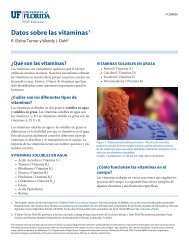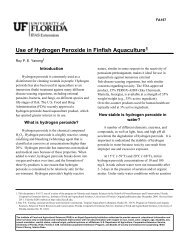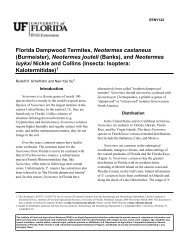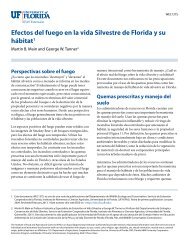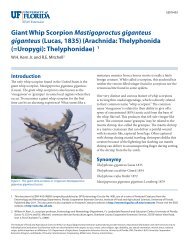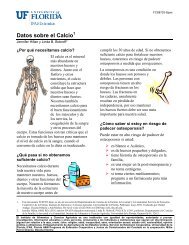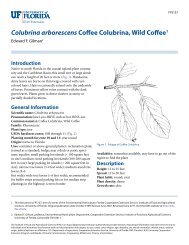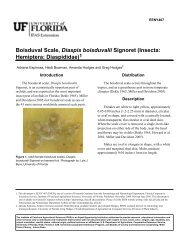Mediterranean Fruit Fly, Ceratitis capitata (Wiedemann) - EDIS ...
Mediterranean Fruit Fly, Ceratitis capitata (Wiedemann) - EDIS ...
Mediterranean Fruit Fly, Ceratitis capitata (Wiedemann) - EDIS ...
Create successful ePaper yourself
Turn your PDF publications into a flip-book with our unique Google optimized e-Paper software.
<strong>Mediterranean</strong> <strong>Fruit</strong> <strong>Fly</strong>, <strong>Ceratitis</strong> <strong>capitata</strong> (<strong>Wiedemann</strong>) (Insecta: Diptera: Tephritidae) 4<br />
anterior of the dorsal bridge has a prominent<br />
sclerotized point. The dorsal wing plate is nearly as<br />
long as the pharyngeal plate. The median area is<br />
relatively unsclerotized. The pharyngeal plate is<br />
elongate, with prominent median hood and anterior<br />
sclerotized area.<br />
Figure 8. Larval cephalo-pharyngeal skeleton of the<br />
<strong>Mediterranean</strong> fruit fly, <strong>Ceratitis</strong> <strong>capitata</strong> (<strong>Wiedemann</strong>).<br />
Graphic by: Division of Plant Industry<br />
The caudal end has bifurcate or paired dorsal<br />
papillules (D1 and D2) on small mount of relatively<br />
flat plate; intermediate papillules (I1-2) as a line of<br />
fused elevations on a very enlarged subspiracular<br />
tubercle, plus a remote I3 at approximately 45 degrees<br />
from I1-2; L1 on the median edge of the caudal end;<br />
V1 not prominent; posterior spiracles elongate (4.5 to<br />
5X width), with dorsal and ventral spiracles angled<br />
away from relatively planar median spiracle;<br />
interspiracular processes (hairs) usually not branched;<br />
anal lobe bifid or entire.<br />
Figure 9. Caudal end of larva of the <strong>Mediterranean</strong> fruit<br />
fly, <strong>Ceratitis</strong> <strong>capitata</strong> (<strong>Wiedemann</strong>). Graphic by: Division<br />
of Plant Industry<br />
Larval Diagnosis: The primary diagnostic<br />
characters for <strong>Mediterranean</strong> fruit fly larvae involve<br />
Figure 10. Posterior spiracles (left side) (after Phillips<br />
1946) of a larva of the <strong>Mediterranean</strong> fruit fly, <strong>Ceratitis</strong><br />
<strong>capitata</strong> (<strong>Wiedemann</strong>). Graphic by: Division of Plant<br />
Industry<br />
Figure 11. anal lobes of larva<br />
the anterior spiracles, the buccal carinae, and the<br />
prominent subspiracular tubercles of the caudal end.<br />
The anterior spiracles have the tubule edge relatively<br />
straight dorsally and the tubule number usually is<br />
nine to 10, although it can be from seven to 11. The<br />
buccal carinae number is nine to 10. The caudal end<br />
has two prominent subspiracular tubercles, each with<br />
a crescent of irregularly fused papillules<br />
(approximately equivalent to I1-2). The anal lobe is<br />
either bifid or entire. The pharyngeal skeleton is<br />
distinctive in overall configuration, particularly the<br />
enlarged subhypostomium of the hypostomium<br />
(posterior to each mouth hook). There is a heavily



